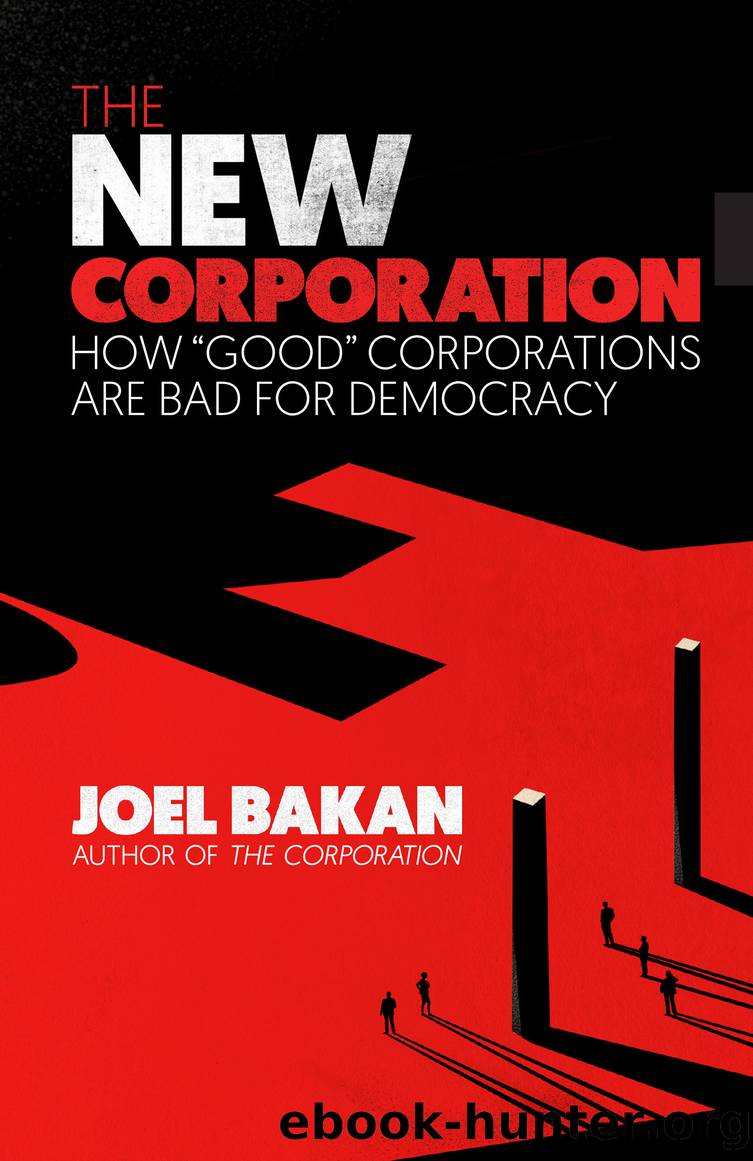The New Corporation by Joel Bakan

Author:Joel Bakan [Bakan, Joel]
Language: eng
Format: epub
Publisher: Penguin Canada
Published: 2020-09-22T00:00:00+00:00
* * *
â
Using technology to de-professionalize teachers, and thereby reduce costs, is not unique to Bridge. Itâs become a veritable movement among education reformers worldwide. Bridgeâs tablets, and the pedagogical approach they represent, mirror a major trend. These days, the most vocal school privatization advocates come from the tech sector, and their express aim is to replace teachers with technology. Bill Gates, Mark Zuckerberg, and Reed Hastings are just a few of âThe Silicon Valley Billionaires Remaking Americaâs Schools,â according to The New York Times, and a large part of their mission is to automate classrooms. As described by Emmett Carson, then a manager of many of these billionairesâ philanthropic portfolios, what they are attracted to, and want to support, are âmodels [that] can produce better resultsâ¦given the changes in innovation that are underway, with artificial intelligence and automation.â
âIn the tech industryâs dream,â says Ravitch, âif the teacher is removed from the equation, then you can cut costs dramatically.â What the industry and its billionaire philanthropists want, she says, is âto have teacherless classroomsââto develop and deploy technologies that, like Bridgeâs tablets, allow companies to hire nonprofessionals and sometimes replace teachers altogether. To that end, Google, Facebook, Apple, and Microsoft, among others, are developing a bevy of technologiesâvirtual classrooms, interactive teaching software, digital marketing strategies (to insert in online lessons), machine testing and continuous assessment, digital behavior management, and social and emotional development toolsâthat, together, constitute a rapidly expanding tech sector estimated to be worth more than $45 billion.
While many of the new technologies obviate the need for professionally trained teachers, others allow small numbers of instructors to reach large numbers of pupils remotely. Corporate-run virtual âschools,â for example, provide students with computers on which they follow lessons at home. Now operating in numerous statesâthey are particularly widespread in Pennsylvaniaââcyber-chartersâ have become cash cows for their corporate operators, because despite not having expenses associated with brick-and-mortar schools, per-student funding from public coffers remains the same. Cyber-charters are notorious for cheating scandals and enrollment inflation, among other kinds of scams and fraud, but the real problem, says Ravitch, is that they donât work, as reflected by âlow test scores, terrible graduation rates, and tremendous attrition.â
Conservative school reformers cheer alongside liberal Silicon Valley moguls like Gates and Zuckerberg as new technologies take over teaching. âNew computer-based approaches to learning simply require far fewer teachers per studentâperhaps half as many, and possibly fewer than that,â say the conservative commentators John Chubb and Terry Moe in their book Liberating Learning. Which, an added bonus, dilutes the power of teachersâ unions. âTechnology,â as Chubb and Moe explain, âis also destined to help resolve the political problem that has prevented reformers from taking effective action. To put it simply: the seepage of technology into the systemâwhich cannot be stopped and will continueâworks slowly but inexorably to undermine the political power of the teachersâ unions. With their power to resist weakened over time, the floodgates will then be opened.â
The stay-at-home schooling made necessary by
Download
This site does not store any files on its server. We only index and link to content provided by other sites. Please contact the content providers to delete copyright contents if any and email us, we'll remove relevant links or contents immediately.
Einstein: His Life and Universe by Walter Isaacson(1353)
Finding Freedom: Harry and Meghan and the Making of a Modern Royal Family by Omid Scobie & Carolyn Durand(1196)
Promised Land (9781524763183) by Obama Barack(1169)
Compromised by Peter Strzok(1084)
Finding Freedom by Omid Scobie(1077)
JFK by Fredrik Logevall(1015)
Freedom by Sebastian Junger(661)
Salford Lads: The Rise and Fall of Paul Massey by Bernard O'Mahoney(601)
The Russia House by John Le Carré(586)
Kremlin Winter by Robert Service(547)
Day of the Dead by Mark Roberts(533)
Graveyard (Ed & Lorraine Warren Book 1) by Ed Warren & Lorraine Warren & Robert David Chase(524)
A World Ablaze by Craig Harline(521)
Flying Tiger by Samson Jack(520)
Joe Biden: American Dreamer by Evan Osnos(507)
The Irish Buddhist by Alicia Turner(494)
100 Things Successful Leaders Do by Nigel Cumberland(489)
Melania and Me: The Rise and Fall of My Friendship With the First Lady by Stephanie Winston Wolkoff(488)
The Mission by David W. Brown(473)
